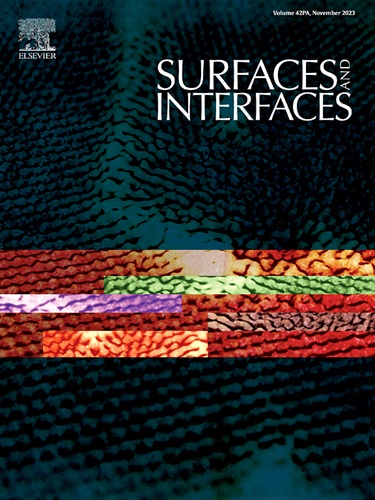Preparation of electronic pastes for high-precision screen printing: action mechanisms and synergistic effects of different polymer binders
IF 5.7
2区 材料科学
Q2 CHEMISTRY, PHYSICAL
引用次数: 0
Abstract
With the continuous advancement of Tunnel Oxide Passivated Contact (TOPCon) solar cell technology, increasingly stringent demands are being placed on the printing precision of electronic pastes. Polymer binders, as critical components of electronic pastes, play a pivotal role in regulating viscosity, enhancing rheological properties, and improving printability. However, the specific action mechanisms by which polymer binders within electronic pastes, as well as the synergistic effects among different polymers, remain insufficiently explored. The effects of various polymer binders on the rheological and printing properties of organic carriers and electronic pastes were systematically investigated. The optimal concentration of polymer binders was determined by the viscosity of organic carriers and the wettability of silicon wafers. The flow behavior and rheological properties of organic carriers and electronic pastes were evaluated using the Ostwald-de Waele power-law model and the Herschel-Bulkley model, respectively. Additionally, screen printing was employed to evaluate the action mechanisms of polymer binders in electronic pastes. High quality electronic pastes (Ag-PSE and Ag-PSC) with excellent rheology properties and printability were successfully developed through the matching and combination of polymers. The optimized electronic pastes exhibited suitable viscosity, high pseudoplasticity, and excellent structural recovery. When utilized as TOPCon front fine grid pastes, the electrode grid lines produced via screen printing and sintering demonstrated high aspect ratios (0.4308 and 0.4324), narrow line widths (only 23.22 μm and 24.45 μm) and low resistivity (2.52 × 10–6 Ω cm and 2.54 × 10–6 Ω cm).

高精度丝网印刷用电子浆料的制备:不同聚合物粘合剂的作用机理和协同效应
随着隧道氧化物钝化接触(TOPCon)太阳能电池技术的不断进步,对电子浆料的印刷精度提出了越来越严格的要求。聚合物粘结剂作为电子浆料的重要组成部分,在调节浆料粘度、增强浆料流变性、改善浆料印刷性能等方面起着举足轻重的作用。然而,聚合物粘合剂在电子浆料中的具体作用机制,以及不同聚合物之间的协同效应,仍然没有得到充分的探索。系统地研究了不同聚合物粘结剂对有机载体和电子浆料流变性能和印刷性能的影响。高分子粘合剂的最佳浓度由有机载体的粘度和硅片的润湿性决定。采用Ostwald-de Waele幂律模型和Herschel-Bulkley模型分别对有机载体和电子浆料的流动行为和流变性能进行了评估。此外,采用丝网印刷技术评价了聚合物粘合剂在电子浆料中的作用机理。通过聚合物的匹配和组合,成功开发出具有优异流变性和可印刷性的高品质电子浆料(Ag-PSE和Ag-PSC)。优化后的电子浆料具有合适的粘度、较高的假塑性和良好的结构恢复性能。通过丝网印刷和烧结制备的电极栅格线作为TOPCon前细栅格糊,具有高纵横比(0.4308和0.4324)、窄线宽(23.22 μm和24.45 μm)和低电阻率(2.52 × 10-6 Ω cm和2.54 × 10-6 Ω cm)的特点。
本文章由计算机程序翻译,如有差异,请以英文原文为准。
求助全文
约1分钟内获得全文
求助全文
来源期刊

Surfaces and Interfaces
Chemistry-General Chemistry
CiteScore
8.50
自引率
6.50%
发文量
753
审稿时长
35 days
期刊介绍:
The aim of the journal is to provide a respectful outlet for ''sound science'' papers in all research areas on surfaces and interfaces. We define sound science papers as papers that describe new and well-executed research, but that do not necessarily provide brand new insights or are merely a description of research results.
Surfaces and Interfaces publishes research papers in all fields of surface science which may not always find the right home on first submission to our Elsevier sister journals (Applied Surface, Surface and Coatings Technology, Thin Solid Films)
 求助内容:
求助内容: 应助结果提醒方式:
应助结果提醒方式:


